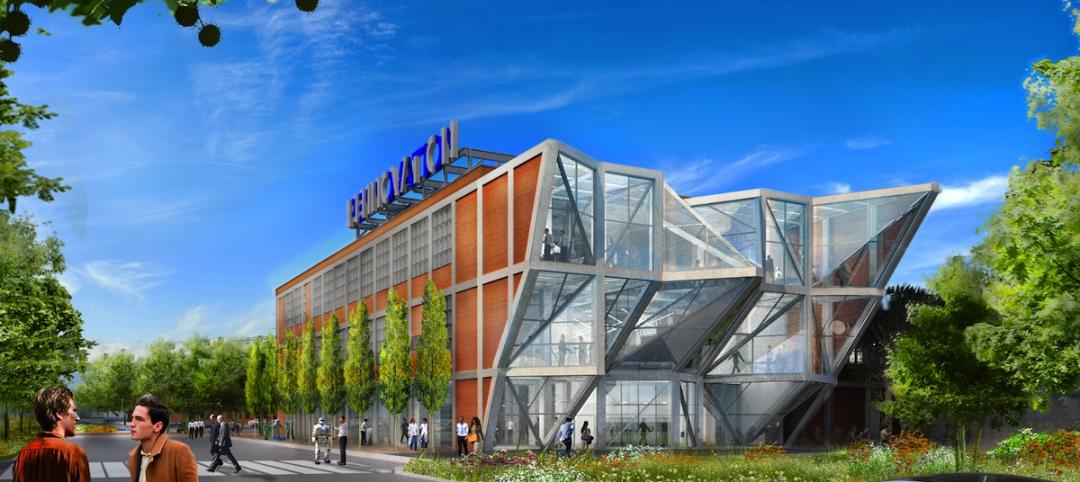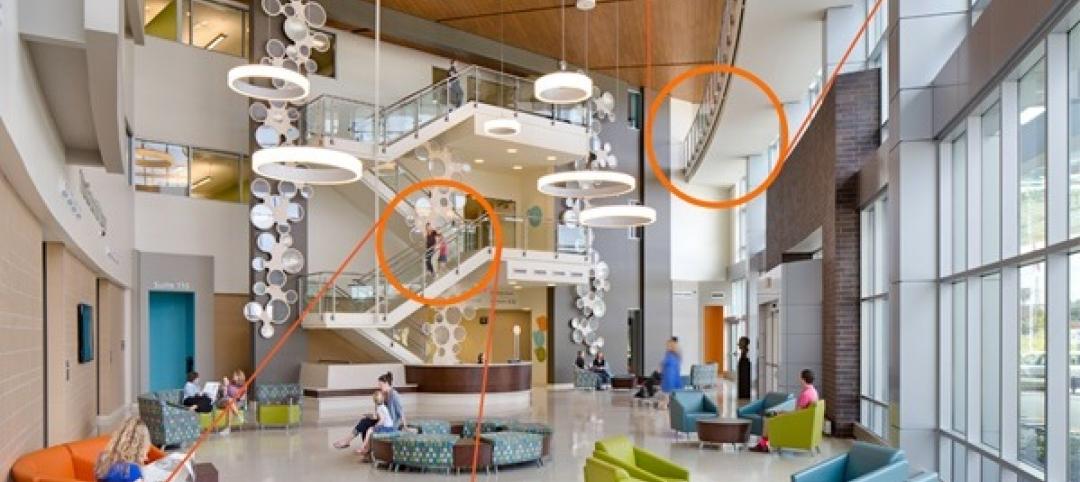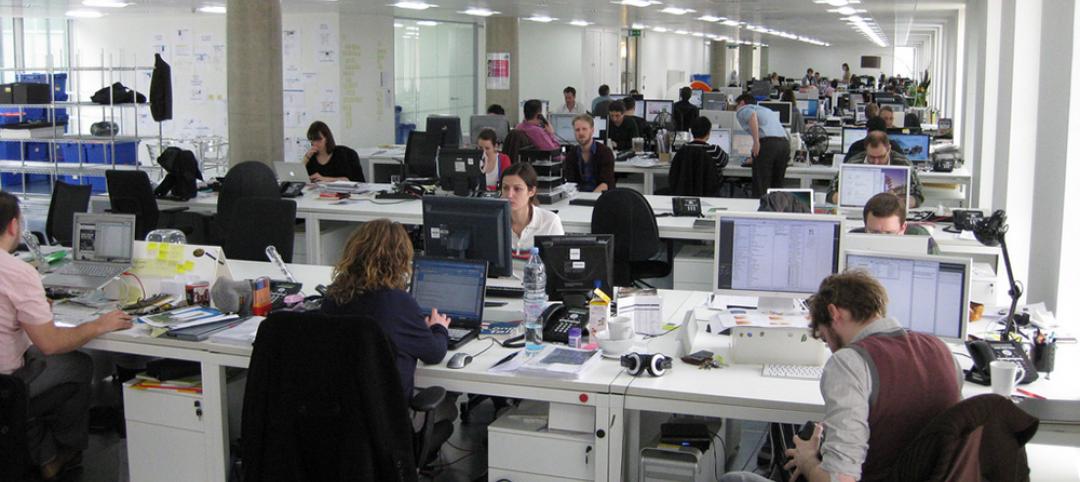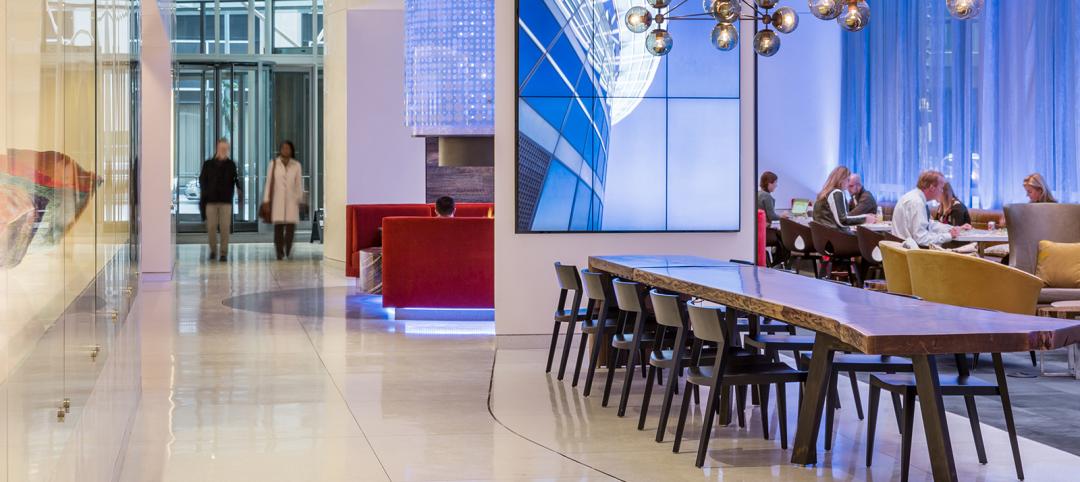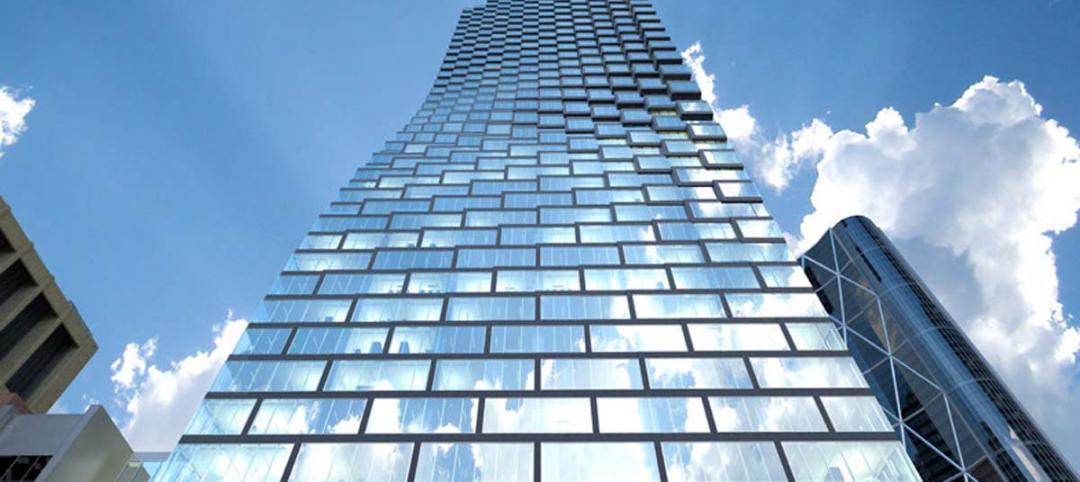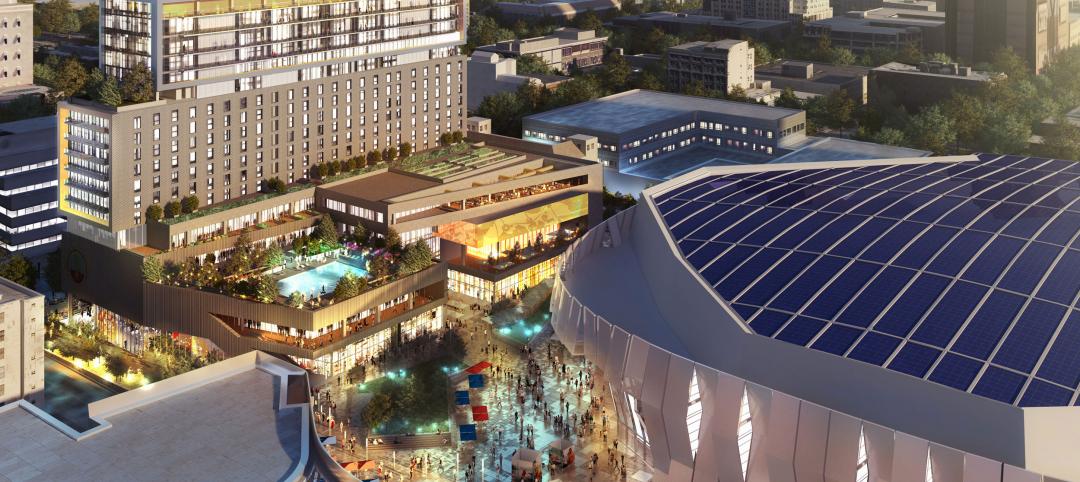In Oak Brook, Ill., about 15 miles west of downtown Chicago, McDonald’s former corporate headquarters has been transformed into a modern office building for its new tenant, Ace Hardware. Now for the first time, Ace Hardware can bring 1,700 employees from three facilities under one roof. (See more office building news from BD+C.)
Originally designed by architect Dirk Lohan, grandson of Mies van der Rohe, McDonald’s old corporate HQ had quirky design elements such as golden arches on door handles and a circular, tiered boardroom that resembled a Quarter Pounder, with “sesame seeds” on the ceiling. In addition to the 300,000-sf office building and 130,000-sf training facility (which housed Hamburger University), the campus comprises a 218-room Hyatt and a smaller leased office building.
Modernizing McDonald’s headquarters while preserving its mid-century modern architecture
Architecture firm Studio Steinbomer has modernized the administrative building while preserving its midcentury architecture and design. Throughout the building, the design team emphasized the midcentury aesthetic—introducing terrazzo flooring, wood slats, metal panels and brick, as well as replacing windows using the original’s same glass profile.
The team reconfigured and renovated the building to serve Ace’s needs, made updates to meet code requirements, and fully renovated all the restrooms, elevator lobbies, and main lobby. A new amenity center includes a café, private dining rooms, commercial kitchen, fitness center, multipurpose room, interview rooms, and conference center.
Two changes represented the most significant interventions: first, converting McDonald’s large test kitchens on the top floor into offices that can enjoy views of the campus; and second, turning the parking garage into a food service area with a café that opens to an outdoor plaza. Both of these elements aim to provide employees with stronger connections to the site. Similarly, the conference center has been equipped with modern technology and flexible folding walls inside a sunlit, glass-encased space, creating a visual and physical connection with the surroundings.
Previously, the administrative facility’s ground floor had been mostly devoted to back-of-house functions. By converting the parking garage and expanding ground-floor uses with vestibules and meeting areas, the lobby is now more interactive and functional. As a result, people feel welcome to linger in the space under its massive skylight.
On the Building Team:
Owner/developer: JPD Oak Brook Holdings, LLC
Design architect and architect of record: Studio Steinbomer
Landscape Architect: Lamar Johnson Collaborative
MEP engineer: ESD (now Stantec)
Structural engineer: Wiss, Janney, Elstner Associates, Inc.
General contractor: Executive Construction, Inc.
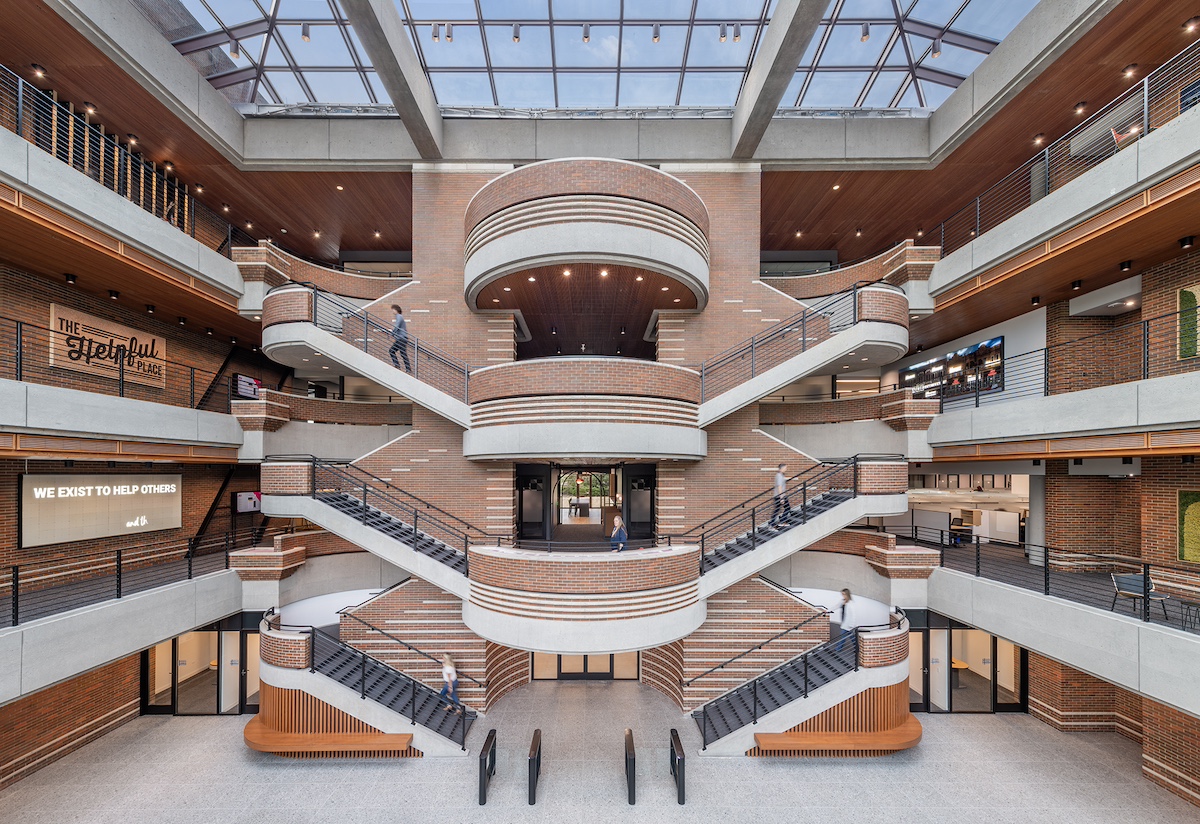
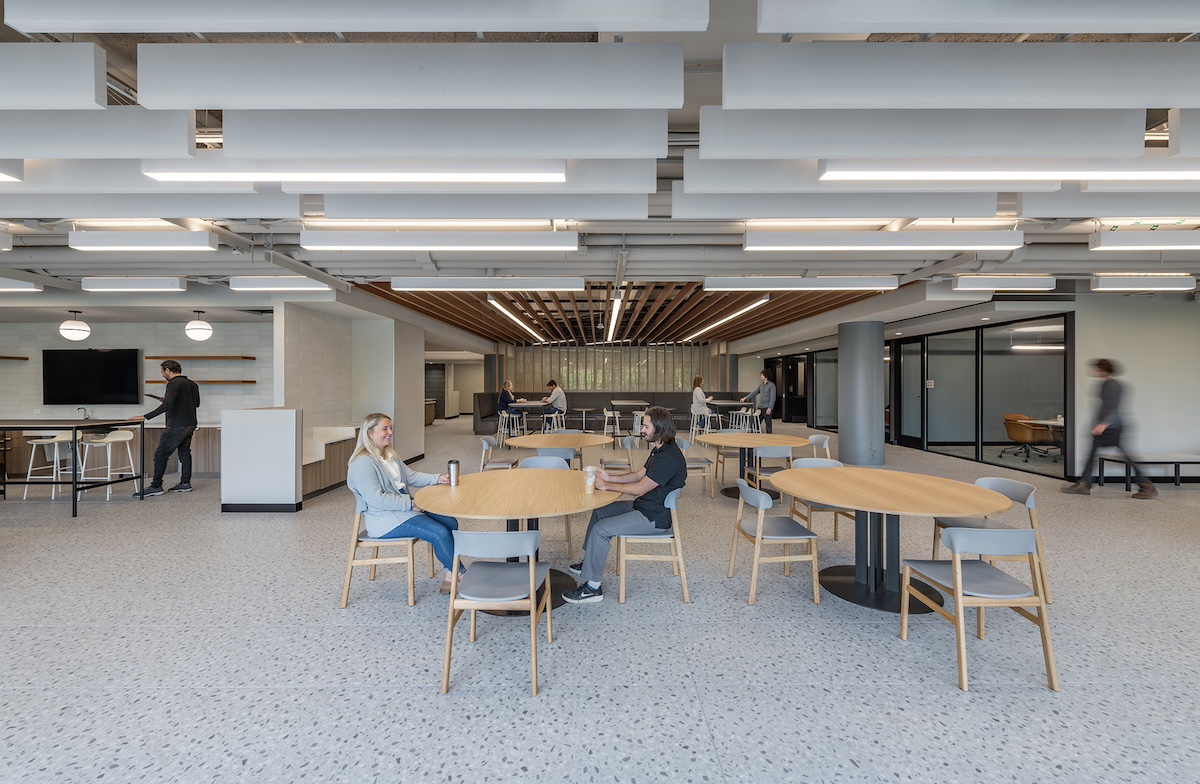
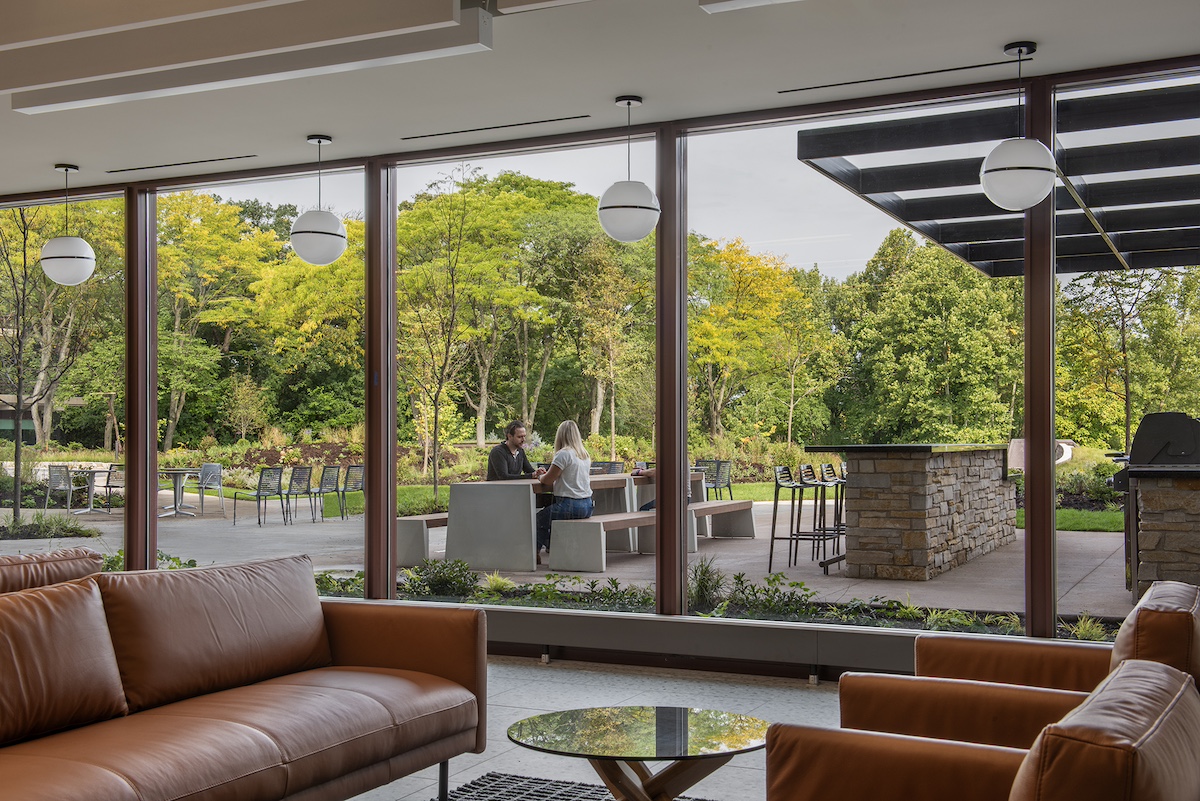
Here is the project summary from architect Studio Steinbomer:
The project to renovate this former McDonalds corporate campus, which was much beloved for its mid-century design and unique features, brought very particular challenges. The 80-acre site, located 15 miles west of downtown Chicago, includes lakes and streams, as well as abundant trees, and even boasts the oldest tree in Illinois. In addition to the 300,000-square-foot office building and 130,000-square-foot training facility - which housed Hamburger University - the campus also comprises a 218-key Hyatt and a smaller leased office building. McDonalds’ departure in 2021 left the specialized buildings and bucolic campus in search of a new use and brought significant concern among both architects and the public that the buildings would be lost to a lack of imagination. Fortunately, the new owner saw opportunity in the existing design and brought in Studio Steinbomer to complete base building improvements of the administrative building for new tenant Ace Hardware
The existing headquarters building carries significant architectural bona fides; it was designed by architect Dirk Lohan, grandson of Mies van der Rohe, and was endowed with exquisite, if somewhat dated and worn, detailing. Its function as McDonald's corporate headquarters also brought with it quirky design elements, including golden arches on door handles and a circular boardroom with three tiers of seating resembling the layers of a quarter pounder, complete with “sesame seeds” on the ceiling. The Steinbomer team took stock of the existing opportunities and gave careful attention to curating what should stay and what could go.
Studio Steinbomer's scope of work included the full renovation of all restrooms, elevator lobbies, and the main lobby, as well as creating a new amenity center that includes a café, private dining rooms, commercial kitchen, fitness center, multi-purpose room, interview rooms, and a conference center. The architects’ efforts included updates to meet code requirements and reconfiguring the program’s spaces and functions, while celebrating the mid-century style and preserving the original architectural design. For Ace Hardware, the project consolidated 1,700 employees from three facilities under one roof for the first time and represented an opportunity to bolster its culture, provide a beautiful workplace, and leave room for expansion. The dramatic adaptive re-use amounted to a taking leap of faith that the interiors could not only be brought into a more modern aesthetic, but also accommodate current technology needs and employee expectations.
The most significant interventions involved converting the large test kitchens on the top floor into offices that take advantage of campus views, and adapting the parking garage into a food service area with a café that opens to an outdoor plaza, both design gestures that provide employees with stronger connections to the site. Likewise, the conference center was fitted with modern technology packages and flexible folding walls inside a sunlit, glass-encased space that interacts visually and physically with its surroundings.
The large administrative facility’s ground floor had been predominantly devoted to back-of-house functions. The lobby, although establishing a grand entrance, previously had little else to offer the building's ground floor experience or uses; there was nowhere to go but up. By converting the parking garage and expanding ground-floor uses with vestibules and meeting areas around the perimeter, the dramatic lobby is now more interactive and functional, inviting people to linger in the charming space under the massive skylight. Throughout the building, but here especially, the Steinbomer team leaned into the mid-century aesthetic, introducing terrazzo flooring, wood slats, metal panels and brick, as well as replacing windows using the same glass profile of the original and continuing the detailing and simplicity of the original design. Dated glass blocks were replaced by glass or slatted wall panels throughout the building to retain the sense of transparency in walls and partitions.
Converting the ground-floor parking garage into the desired café amenity brought different challenges. Because the live load requirement for vehicles is lower than that for people, parts of the garage space required a reinforced structural slab to be placed on top of the existing slab and columns to also be reinforced, creating further spatial limitations. In addition, accommodating modern technology, electrical, and HVAC infrastructure added a layer of complexity in the building’s various low-slung interiors with long, open spans. In response, the architects varied ceiling heights where possible to open interior spaces and introduced acoustical ceiling baffles to mitigate any closed-in effect. To create a sense of void above the low ceiling in the café, for example, wooden slats were layered overhead to create the perception of an unseen void. The effect creates the feeling of sitting under a pergola shelter that opens onto the verdant campus via the floor-to-ceiling glass that opens to the adjacent patio.
The artful adaptive re-use of the campus, once thought to be un-adaptable due to its specific program and quirky features, manages to deftly retain the existing bones of the architecture, the character and quality of the design, and the spirit of the place to keep the building alive and functioning well into the future.
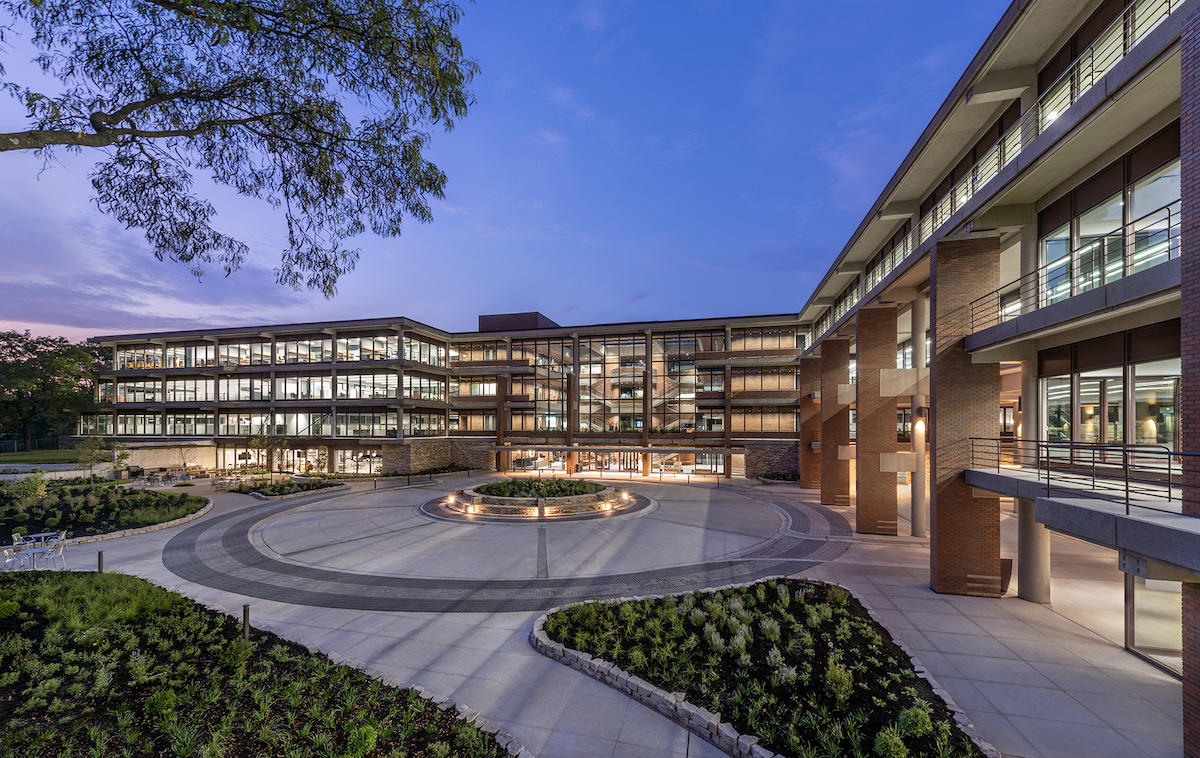

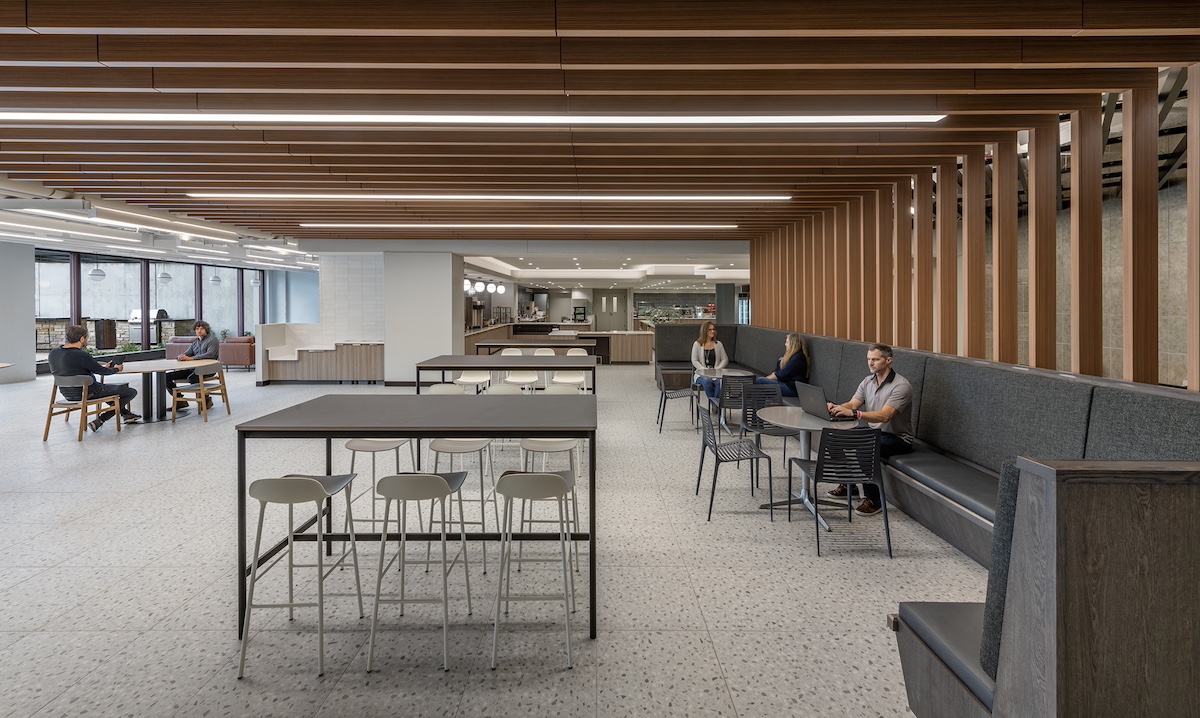

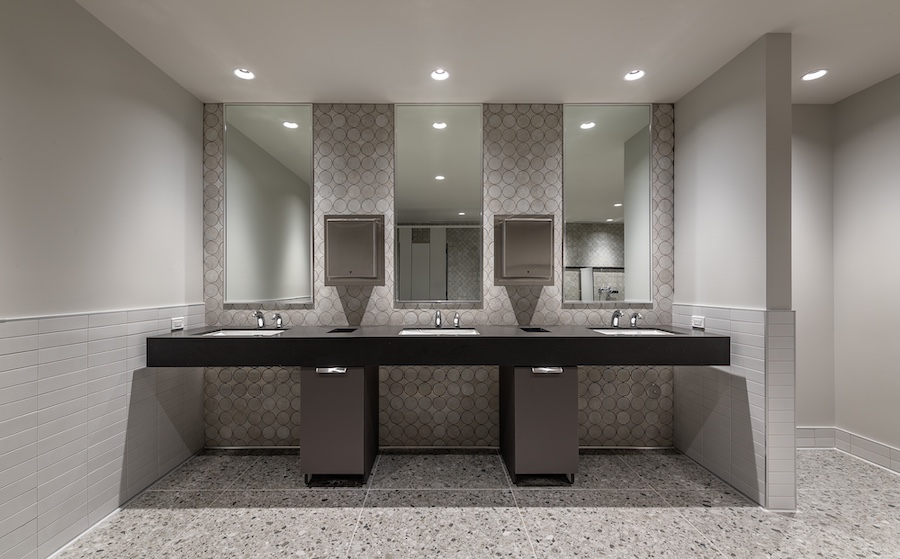
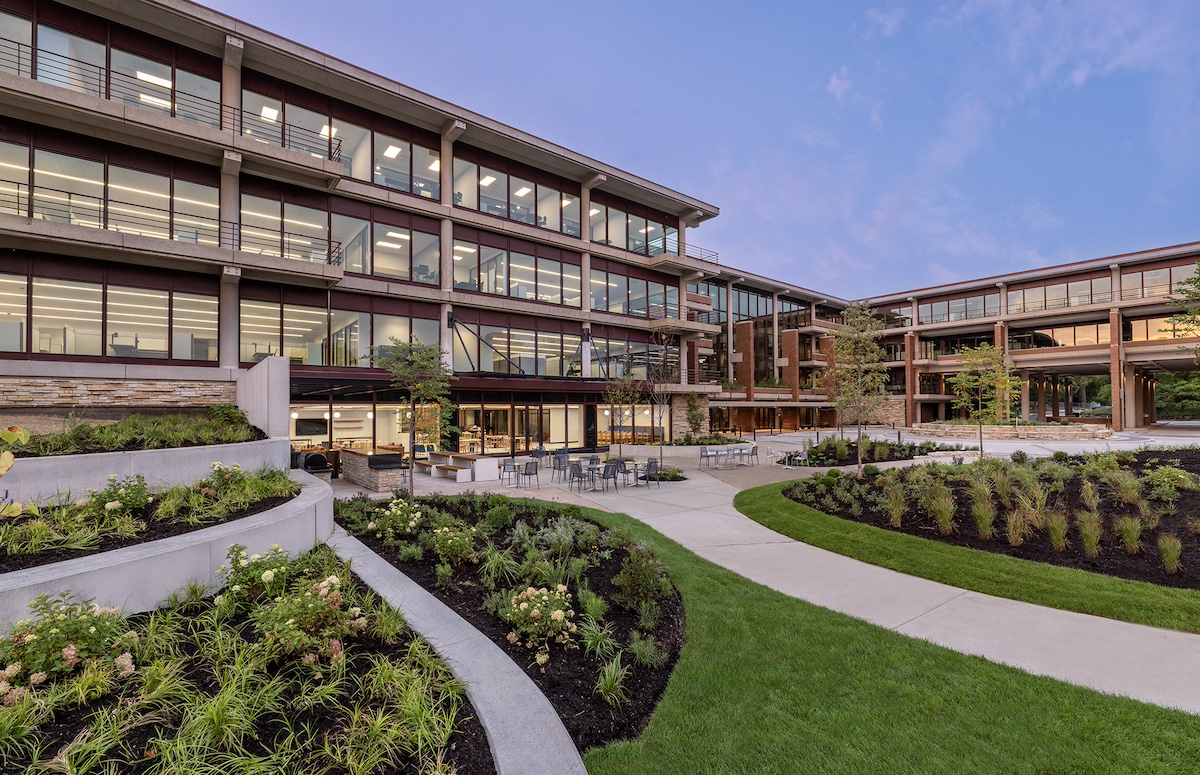
Related Stories
Office Buildings | Mar 3, 2015
Former DuPont lab to be converted into business incubator near UPenn campus
The new Pennovation Center will provide collaborative and research spaces for educators, scientists, students, and the private sector.
Office Buildings | Mar 1, 2015
Google unveils dramatic tent-like, modular-focused plan for corporate HQ
The master plan by Bjarke Ingels and Thomas Heatherwick will wrap highly flexible office blocks in soaring translucent canopies.
Office Buildings | Feb 26, 2015
Using active design techniques to strengthen the corporate workplace and enhance employee wellness
The new Lentz Public Health Center in Nashville, Tenn., serves as a model of how those progressive and healthy changes can be made.
Sponsored | Shopping Centers | Feb 26, 2015
A color-changing gateway for Altara Center
Valspar works with developers to complete a multicolored shopping center façade in Honduras.
Office Buildings | Feb 23, 2015
The importance of quiet and the consequences of distraction
Recent work style studies show that the average knowledge worker spends 25-35% of their time doing heads-down focused work. Once thrown off track, it can take some 23 minutes for a worker to return to the original task.
Codes and Standards | Feb 18, 2015
USGBC concerned about developers using LEED registration in marketing
LEED administrators are concerned about a small group of developers or project owners who tout their projects as “LEED pre-certified” and then fail to follow through with certification.
Office Buildings | Feb 18, 2015
Commercial real estate developers optimistic, but concerned about taxes, jobs outlook
The outlook for the commercial real estate industry remains strong despite growing concerns over sluggish job creation and higher taxes, according to a new survey of commercial real estate professionals by NAIOP.
Office Buildings | Feb 18, 2015
Why the mobile workplace isn't always mobile
Perkins+Will’s Janice Barnes addresses the nuance in mobility types and explains the importance of defining terms upfront.
High-rise Construction | Feb 17, 2015
Work begins on Bjarke Ingels' pixelated tower in Calgary
Construction on Calgary’s newest skyscraper, the 66-story Telus Sky Tower, recently broke ground.
Mixed-Use | Feb 13, 2015
First Look: Sacramento Planning Commission approves mixed-use tower by the new Kings arena
The project, named Downtown Plaza Tower, will have 16 stories and will include a public lobby, retail and office space, 250 hotel rooms, and residences at the top of the tower.



